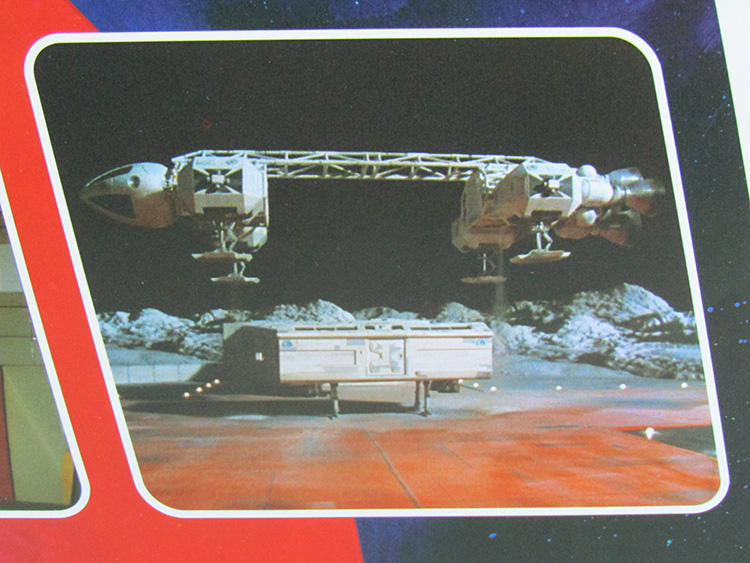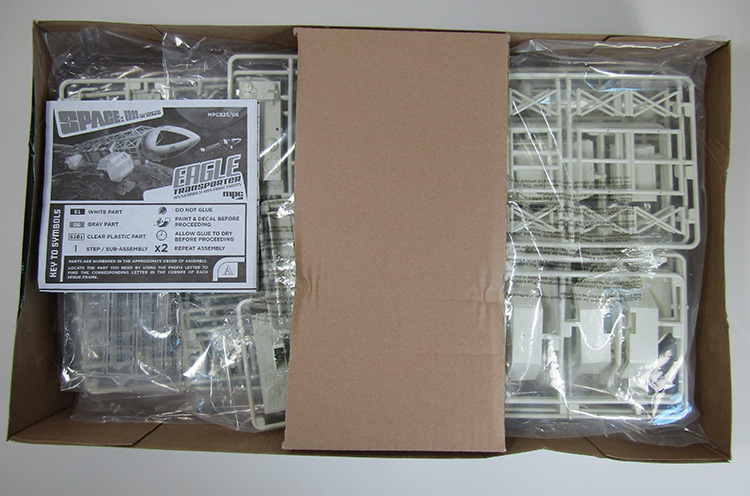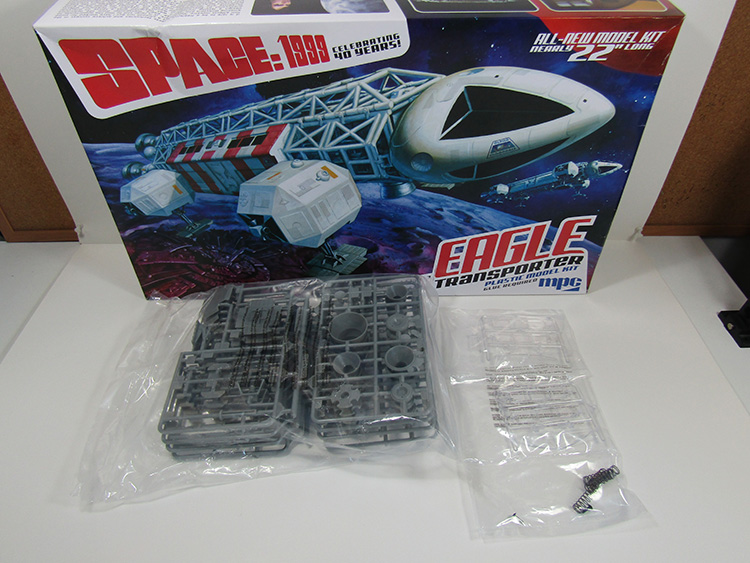The original stage models
The model of the Eagle used in filming was built in four scales: by the end of the series, there were three 44-inch (110 cm) Eagle models, two 22-inch (56 cm) Eagles, one 11-inch (28 cm) Eagle, and a 5-inch (13 cm) Eagle. The superstructure framework was composed of brass tubing on the larger-scale models and the command module was fibreglass, with landing gear pods made of a wooden core with Perspex cladding. Compressed freon streams were used to portray the vertical jets used in lift-off and landing sequences and the exhaust from the main rockets. The special effects team worked in Bray Studios, a separate studio away from where the live action filming took place.
The production team included several experts who later went on to win Academy Awards for Alien (1979) and The Empire Strikes Back (1980):
• Brian Johnson – SFX Designer, Director
• Nick Allder – SFX Director (Year 1), Lighting Cameraman (Year 2)
• Martin Bower – Modeller
Source: https://en.wikipedia.org/wiki/Space:_1999 https://en.wikipedia.org/wiki/Eagle_Transporter

The storyline
Space: 1999 is a British science-fiction television series that ran for two seasons and originally aired from 1975 to 1977. In the opening episode, set in the year 1999, nuclear waste stored on the Moon’s far side explodes, knocking the Moon out of orbit and sending it, as well as the 311 inhabitants of Moonbase Alpha, hurtling uncontrollably into space. The series then follows the exploits of the hapless crew as they traverse the galaxy.
The series was the last production by the partnership of Gerry and Sylvia Anderson and was the most expensive series produced for British television up to that time. The first series was co-produced by the British television company ITC and the Italian television company RAI, while the second series was produced solely by ITC, then under American management.
What’s in the box
The box has some impressive art work on the top face, along with details of the Eagle technical specifications and some scene shots from the TV series on the sides.

Opening the lid and tray type box, we are confronted with a wealth of plastic. There is a sturdy packing support to prevent crushing, which is clearly a good idea as the cardboard is not particularly sturdy.

Over 300 parts are contained in plastic wrapped sprues, with the majority in off white styrene and the undercarriage parts moulded in gray. One sprue contains the clear parts and a separate package with the oleo leg springs.


There appears to be little or no flash present and the styrene has a fine smooth surface free of any visible flaws.